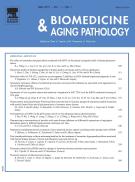Therapeutic effect of hesperidin with reference to biotransformation, lysosomal and mitochondrial TCA cycle enzymes against 7,12-dimethylbenz(a)anthracene-induced experimental mammary cellular carcinoma - 22/11/11

Abstract |
The present study was aimed to investigate the therapeutic effect of hesperidin with reference to hepatic biotransformation, lysosomal and mitochondrial TCA cycle enzymes against 7,12-dimethylbenz(a)anthracene (DMBA)-induced experimental breast cancer. DMBA is a major class of chemical carcinogen present in the environment and it may increase breast cancer risk. In the present investigation, 7,12-DMBA was used as a carcinogen to induce breast cancer in rats. Hesperidin, a natural flavanoglycoside has demonstrated a wide variety of biological activities which make it a good candidate for the treatment of many oxidative stress-mediated diseases. In this study the hepatic biotransformation (Phase I, Phase II) enzymes were analyzed both in breast and liver. The lysosomal enzymes were analyzed in breast tissues and the key mitochondrial TCA cycle enzymes were analyzed in liver. The results revealed that treatment with hesperidin (30mg/kg body weight) significantly restored all the altered biochemical parameters. The ultra structural analysis of breast and histology of liver tissues inevitably supports the biochemical alterations and this was attributed due to the interaction of flavonoid hesperidin through the induction or inhibition of metabolism and also the modulating property in the lysosomal and TCA cycle compartments.
Le texte complet de cet article est disponible en PDF.Keywords : DMBA, Lysosomal enzymes, TCA cycle enzymes, Free radicals, Biotransformation enzymes, Breast cancer, Hesperidin
Plan
Vol 1 - N° 3
P. 158-168 - juillet 2011 Retour au numéroBienvenue sur EM-consulte, la référence des professionnels de santé.
L’accès au texte intégral de cet article nécessite un abonnement.
Déjà abonné à cette revue ?

